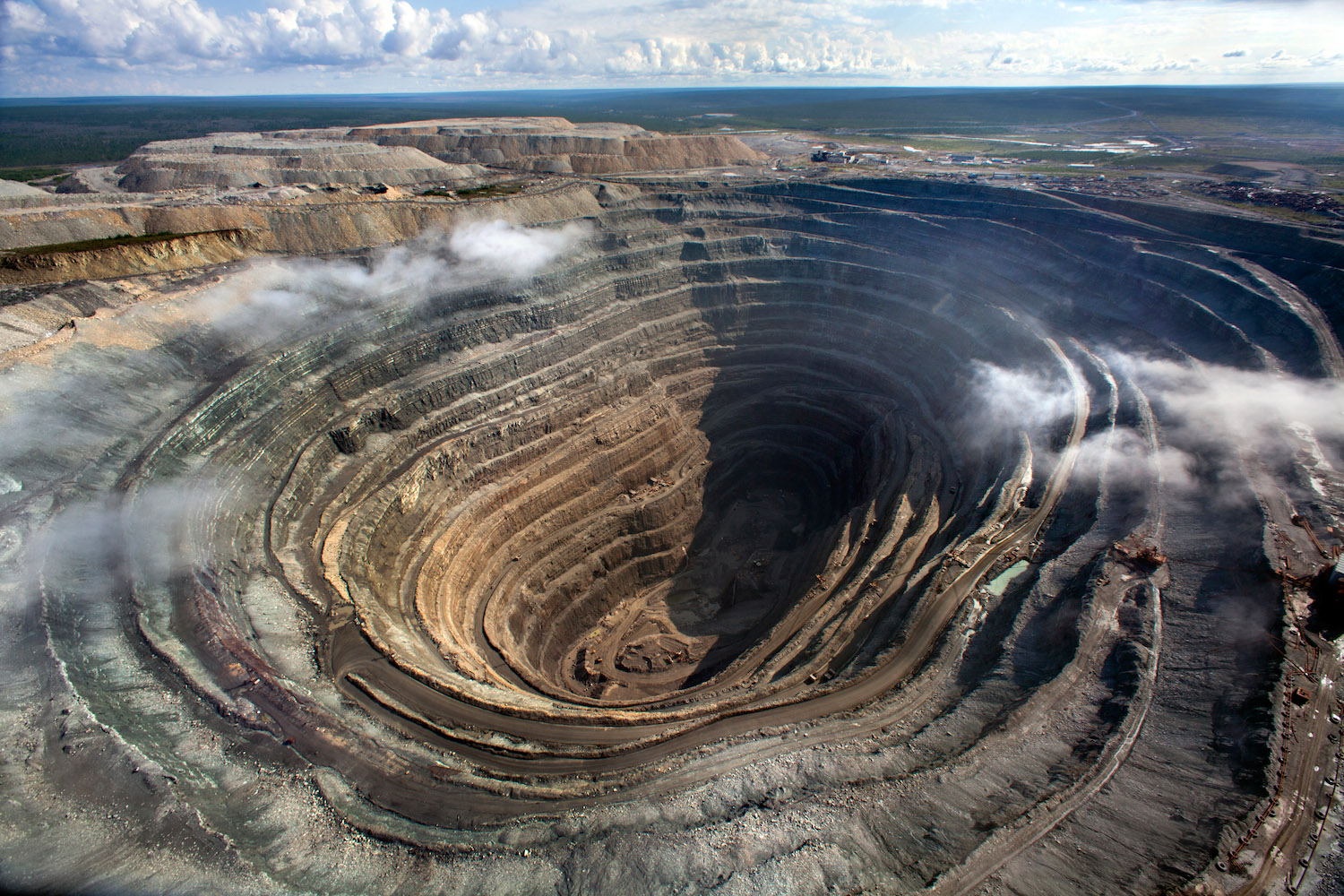Mining and Extraction: Diamonds Pit
Diamonds pit – Diamond mining is a complex and dangerous process. The techniques used to extract diamonds from the pit vary depending on the geology of the deposit. In open-pit mining, the overburden (the soil and rock that covers the diamond-bearing rock) is removed using heavy machinery. The diamond-bearing rock is then blasted and crushed to release the diamonds.
Beneath the sun-scorched earth, the diamonds pit whispered tales of a thousand lives. Each glimmering stone, a testament to the unyielding hope and relentless pursuit of wealth. Yet, beyond their monetary value, diamonds held a deeper meaning, a reflection of purity and eternal love.
Diamonds meaning transcended the physical, becoming symbols of the unbreakable bonds that connected hearts across time and space. Within the depths of the diamonds pit, the echoes of these meanings lingered, entwined with the dreams and aspirations of those who dared to delve into its depths.
In underground mining, shafts are sunk into the earth to reach the diamond-bearing rock. The rock is then mined using a variety of methods, including blasting, drilling, and cutting. Diamond mining is a challenging and risky business. The work is often done in remote areas with limited infrastructure. The miners are exposed to a variety of hazards, including cave-ins, explosions, and exposure to toxic chemicals.
The diamonds pit was a place of both beauty and danger, where fortunes were made and lost in a matter of seconds. Like the addictive game of wordle nyt , where each guess brings you closer to the truth, the diamonds pit offered a tantalizing glimpse of what could be, but also the very real possibility of failure.
Diamond Production and Reserves, Diamonds pit
The world’s largest diamond mines are located in Russia, Botswana, and South Africa. These mines produce the majority of the world’s diamonds. The global diamond production is estimated to be around 150 million carats per year. The majority of these diamonds are used in jewelry, with a small percentage used for industrial purposes.
The diamonds pit, a place of hidden treasures and elusive dreams, is a world unto itself. But beneath the glimmering surface lies a darker underbelly, a casino pit, where fortunes are won and lost with the turn of a card.
The whirl of roulette wheels and the clink of chips echo through the air, creating a symphony of chance and despair. Yet, like the diamonds that are sought after in the depths of the earth, there is always the hope of a glimmering prize, a diamond in the rough, waiting to be discovered.
The world’s diamond reserves are estimated to be around 2.5 billion carats. However, the majority of these reserves are located in remote areas or in deep underground deposits. As a result, it is difficult and expensive to extract these diamonds.
Environmental Impact

Diamond mining can have a significant impact on the surrounding environment. Mining activities can lead to deforestation, soil erosion, and water pollution. The use of heavy machinery and chemicals can also damage the ecosystem and harm wildlife.
Mitigation Measures
In recent years, there has been a growing awareness of the environmental impact of diamond mining. As a result, many mining companies have adopted measures to mitigate the negative effects of their operations. These measures include:
- Using more sustainable mining practices, such as open-pit mining and alluvial mining.
- Reclaiming mined land and restoring it to its natural state.
- Investing in renewable energy sources.
- Reducing water consumption and pollution.
Ethical Considerations
The environmental impact of diamond mining is just one of the ethical considerations that must be taken into account when extracting diamonds. Other ethical considerations include:
- The use of child labor in some diamond mines.
- The displacement of indigenous peoples from their traditional lands.
- The funding of armed conflicts through the sale of diamonds.
Consumers who are concerned about the environmental and ethical impact of diamond mining can choose to buy diamonds that are certified by the Kimberley Process Certification Scheme (KPCS). The KPCS is an international agreement that aims to prevent the sale of conflict diamonds.
Cultural and Economic Significance

Diamonds have held cultural and economic significance throughout history. Their beauty, rarity, and durability have made them coveted by royalty, celebrities, and collectors alike.
In many cultures, diamonds are associated with love, commitment, and eternity. They are often used in engagement rings and wedding bands as a symbol of lasting affection. Diamonds are also seen as a symbol of wealth and status, and have been used as a form of currency in some societies.
Role in the Global Economy
Diamonds are a major commodity in the global economy, with an estimated value of over $100 billion per year. The majority of diamonds are mined in Africa, with Botswana, South Africa, and Angola being the largest producers. The diamond industry provides employment for millions of people around the world, and contributes significantly to the economies of many countries.
Impact on Local Communities
Diamond mining can have a significant impact on local communities, both positive and negative. On the positive side, diamond mining can provide employment and economic development. However, diamond mining can also lead to environmental degradation, displacement of local communities, and conflict.
- Positive Impacts:
- Employment and economic development
- Improved infrastructure
- Increased tax revenue
- Negative Impacts:
- Environmental degradation
- Displacement of local communities
- Conflict
Beneath the cursed diamonds pit, where greed whispers through the shadows, lies a hidden treasure. These gems, imbued with ancient energy, carry a profound diamond meaning that transcends their brilliance. They are said to represent purity, strength, and unyielding spirit, mirroring the resilience of those who delve into the depths of the pit in search of fortune.